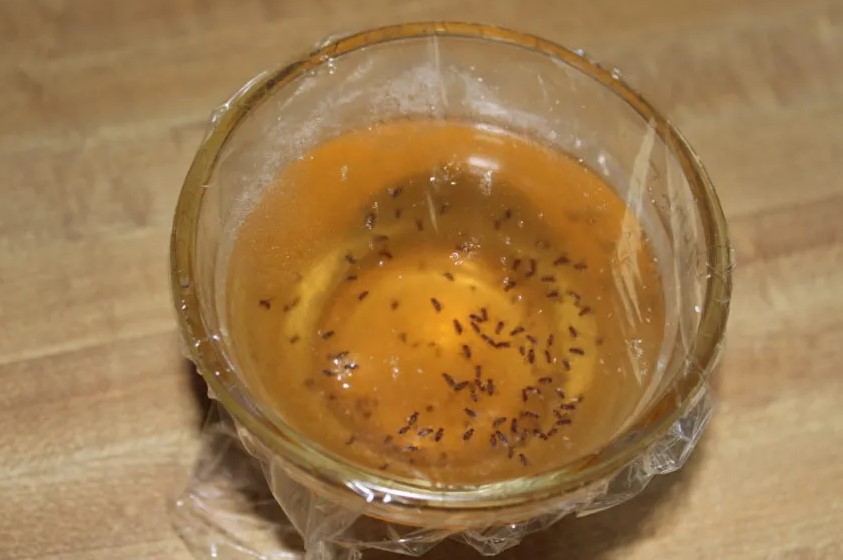**Battling the Buzz: DIY Fruit Fly Traps and Tricks**
## I. Introduction to Fruit Fly Infestations and DIY Solutions
Summer’s sweet bounty can often attract some less-than-welcome visitors to our kitchens: fruit flies. These tiny, persistent little pests seem to appear out of nowhere, buzzing around your fruit bowl with gleeful abandon. But don’t surrender your summer strawberries just yet! With some savvy DIY solutions, you can bid farewell to fruit fly frustrations. In this friendly guide, we’ll walk through the ins and outs of homemade traps and other natural remedies to keep these miniature marauders at bay.
## II. Understanding Fruit Fly Behavior for Effective Trapping
Before we set our trap-building plans into motion, let’s get into the heads (and habits) of fruit flies. These winged critters are drawn to ripe or fermenting fruit and vegetables, along with other sweet, organic materials. They have a remarkable sense of smell and can detect the yeast that causes fermentation from quite a distance. Understanding this can help us outsmart them. Creating a trap that mimics these conditions will lure them in and help reduce their numbers significantly.
## III. Essential Materials for a Homemade Fruit Fly Trap
Preparing to build your trap doesn’t require a trip to a specialty store or an extensive shopping list. In fact, you likely have most of the items you’ll need right at home. Here’s what to gather:
– A container (a jar, a bowl, or even a plastic bottle)
– Plastic wrap or a small piece of paper to create a funnel
– A toothpick or something similar to poke small holes
– Bait (apple cider vinegar, ripe fruit, or wine work wonders)
– Dish soap (a drop or two to break the surface tension of the liquid)
With these simple materials in hand, you’re ready to construct your fruit fly fortress.
## IV. Step-by-Step Guide to Creating Your Fruit Fly Trap
Let’s roll up our sleeves and dive into the nitty-gritty of trap making. It’s easier than baking a pie and way more satisfying when you see those flies trapped. Here’s the step-by-step:
1. **Select Your Container**: A jar or bottle works well because the narrow opening makes it harder for flies to escape. If using a bowl, ensure it’s not too wide.
2. **Prepare Your Bait**: Pour about an inch of apple cider vinegar into the container. If you’re using fruit, chop it up and place it in the jar. A splash of wine can also work well if you’re feeling generous enough to share with the flies.
3. **Add Dish Soap**: This is the secret weapon. A drop or two of dish soap in the vinegar or on the fruit breaks the surface tension, causing the flies to sink when they land.
4. **Create the Entrance**: Cover the container with plastic wrap, securing it with a rubber band. Poke small holes just large enough for the fruit flies to enter. Alternatively, roll a piece of paper into a funnel shape with a small opening at the bottom and place it into the jar’s mouth.
5. **Set the Trap**: Place your creation near the fruit fly hotspots—usually where your fruits and veggies live.
6. **Wait and Watch**: It might be a slow start, but give it time. You’ll soon see flies trapped inside the container.
## V. Tips for Placing and Maintaining Your Fruit Fly Trap
Here’s some advice for getting the most out of your DIY trap:
– **Location, Location, Location**: Fruit flies aren’t just about the fruit. They’re attracted to sinks, garbage bins, and recycling containers, too. Consider placing traps near these areas.
– **Patience Pays Off**: Give the trap a few days to work its magic. If you’re not catching flies, try moving it to a different spot or consider changing the bait.
– **Keep it Fresh**: Every few days, clean out the trap and start again. This prevents mold from developing and keeps the trap enticing.
– **Out of Sight**: While it’s interesting to watch your trap fill up, it’s not the most appetizing sight. Try to place it where it’s effective but not in plain view.
## VI. Troubleshooting Common Issues with Homemade Fruit Fly Traps
Like any good battle strategy, sometimes you need to adapt. If your fruit fly trap isn’t performing as expected, consider these tweaks:
– **Increase Attractiveness**: It could be that your bait isn’t strong enough. Try warming the vinegar briefly in the microwave to enhance its scent before pouring it into the trap.
– **Check for Gaps**: Make sure the plastic wrap is tightly sealed with no gaps. Fruit flies are tiny and can escape through the smallest of openings.
– **Reassess the Entrances**: If the holes in the plastic wrap are too large, the fruit flies may be escaping. They should be just big enough for the flies to enter.
## VII. Additional Natural Remedies to Keep Fruit Flies at Bay
Besides your new trapping skills, here are a few more natural strategies to keep fruit flies from making themselves at home:
– **Sanitation**: Clean up spills, especially sugary ones, immediately. Keep your sink and drains clear of food debris.
– **Storage**: Store ripe fruit in the refrigerator, and dispose of overripe fruit promptly.
– **Repellents**: Some essential oils like peppermint, lemongrass, and eucalyptus can act as natural repellents. A few drops on a cotton ball placed near fruit can help deter flies.
– **Herbs**: Growing basil or lavender near your fruit bowl can also help keep the flies away—their scent confuses and repels the pesky insects.
There you have it, your comprehensive guide to creating and maintaining a DIY fruit fly trap, with some bonus tips for keeping your home fruit fly-free. Remember, while fruit flies are certainly an annoyance, they’re not invincible. With these time-tested strategies, you’ll reclaim your kitchen from these winged invaders in no time. Happy trapping!

